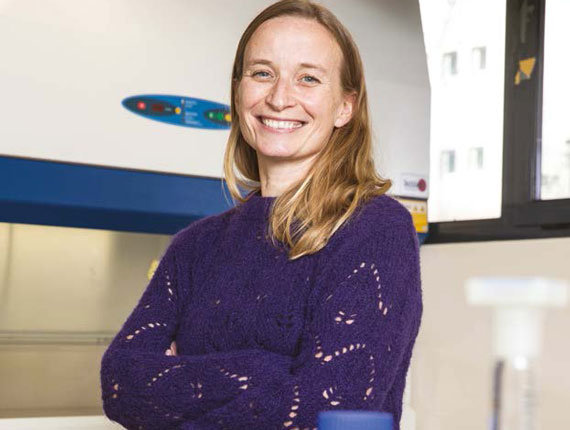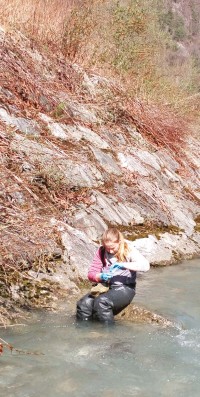Interview with Séverine Le FaucheurEcotoxicology to rescue the environment

Séverine Le Faucheur is a bio-geochemist and ecotoxicologist working at IPREM and an associate professor at the “Water Earth Environment” laboratory of the National Canadian Institute for scientific research (INRS-ETE). Since 2019, she is also the head of the E2S UPPA partnership Chair, Ecotox, which focuses on the ecotoxicology of chemical contaminants in continental waters.
How does one become an ecotoxicologist?
I started out by studying marine chemistry at the Université de Bretagne Occidentale. The PhD I then obtained at the Swiss Federal Institute for aquatic sciences and technologies [EAWAG, which reports to the Federal Polytechnic School of Zurich] was on the subject of phytochelatins, polypeptids synthesised by algae capable of fixing metals and metalloids. I investigated metal toxicity further during my post-doctoral research at the INRS-ETE, this time focusing on the toxicity of mercury and technologically-critical new elements such as rare earth elements and precious metals. In fact, I’ve always worked at the interface between ecology and toxicology, whether in Switzerland, in Canada or in Pau.
How was the Ecotox chair born?
Ecotox is the result of discussions between E2S UPPA, the environmental chemistry and microbiology hub of the IPREM, Total’s Platform for Environmental Research in Lacq (PERL) and Rio Tinto. We wanted to pool our competencies in favour of ecotoxicology, to design new bio-indicators. Today, in Europe, water resources are essentially protected by the EU Water Framework Directive. Of course, it’s an effective regulation but it has its limitations in terms of assessing the environmental risk of chemical contaminants. We want to break down walls, by filling the existing gaps concerning mixtures of metals and organic contaminants for example. We would also like to investigate the impact of global changes causing water quality to deteriorate.
What are your research focuses ?
The Chair is composed of three PhD students, one post-doc researcher, a study engineer, a dozen or so researchers from the IPREM and two industrial partners: Total and the mining group, Rio Tinto. Together, we have determined three main research focuses: the impact of mixtures of metals and contaminants on micro-algae, the use of bio-minerals – like mollusc shells – as bio-indicators of exposure to contaminants, and lastly, environmental genomics. On this last subject, we start with the detection of species’ DNA to develop indicators that will measure the impact of contaminants on micro-organism communities. To carry out this research, we are relying on the cutting-edge analytical techniques available at the IPREM as well as using the artificial rivers of the PERL where it is possible to simulate natural ecosystems in controlled conditions.
